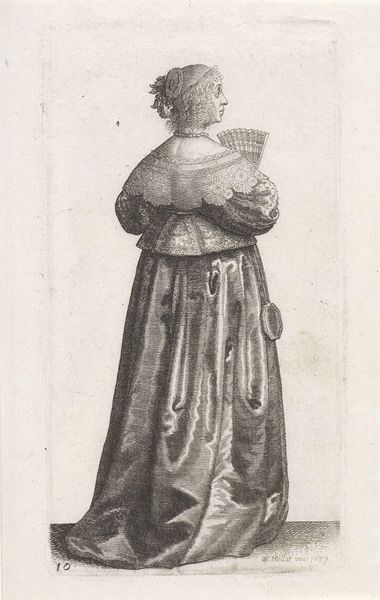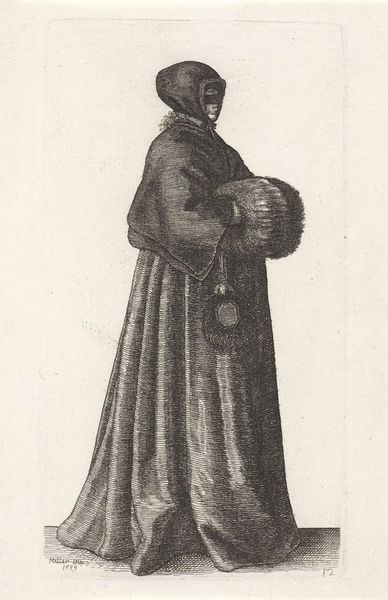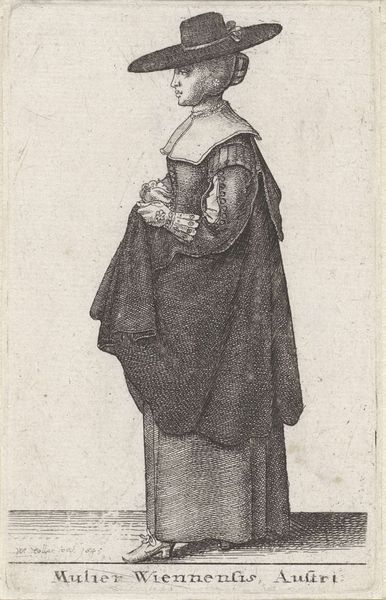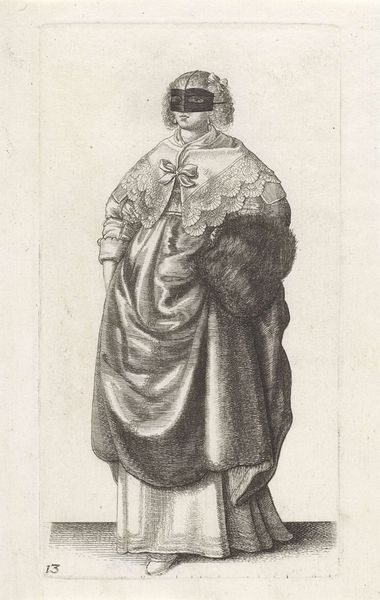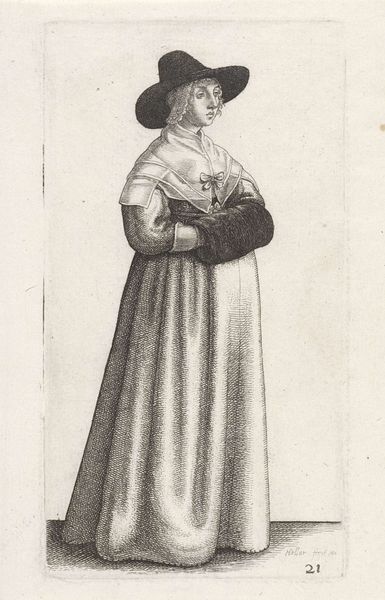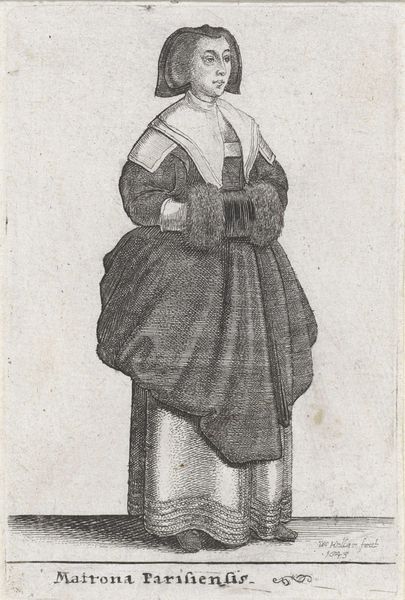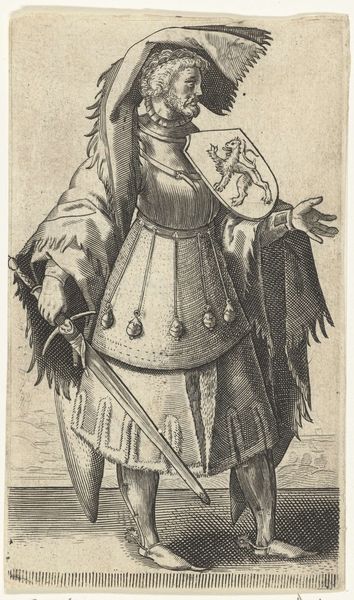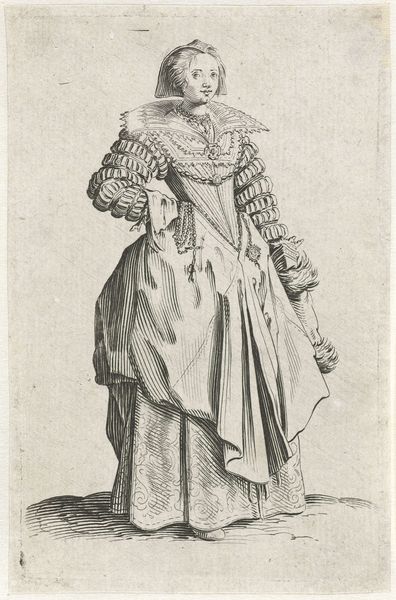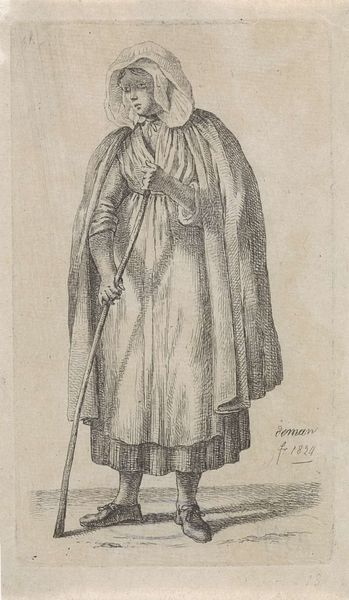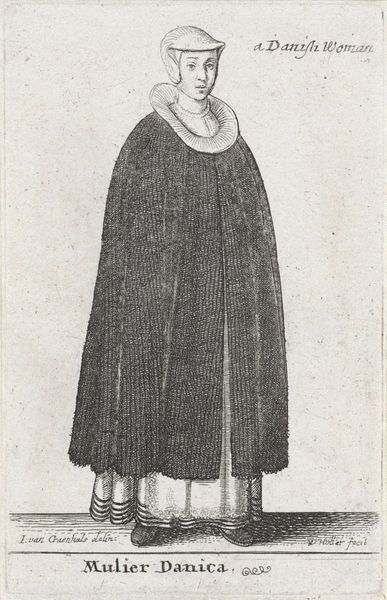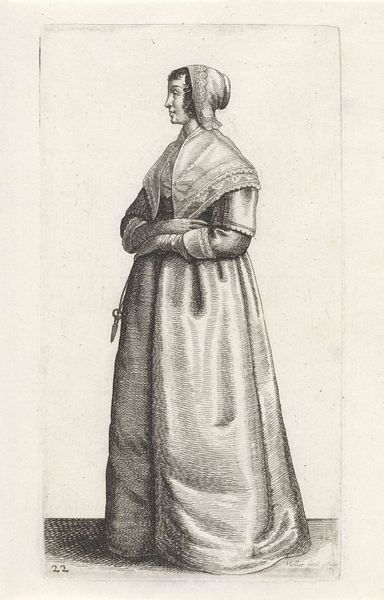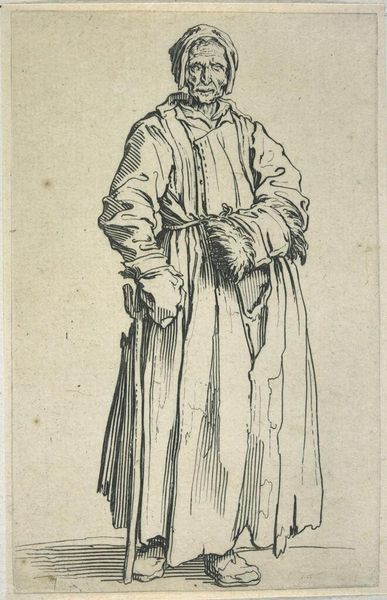
engraving
#
portrait
#
baroque
#
dress
#
engraving
Dimensions: height 132 mm, width 73 mm
Copyright: Rijks Museum: Open Domain
Editor: This is "Engelse vrouw met breedgerande hoed" by Wenceslaus Hollar, made in 1640. It’s an engraving, and what strikes me immediately is the formality of the figure; there’s something reserved and almost austere about her pose. What stands out to you when you look at this work? Curator: Immediately, the hat speaks to me – not merely as headwear, but as a proclamation. Its rigid brim suggests authority and perhaps even a certain aloofness. What does a broad-brimmed hat like this communicate about social standing in 17th century England? Consider how such adornment functioned as a visual signifier within the tightly structured hierarchy of the time. Editor: It feels almost performative, like she's deliberately presenting herself in a certain light. I wonder about the lace collar and the way the dress seems to flow; is there a specific symbolic language at play with these elements? Curator: Absolutely. Lace, meticulously crafted, represented wealth and status. But notice also the relative simplicity of her overall attire. Does that contrast create a visual tension, perhaps reflecting the societal pressures on women to balance piety with displays of affluence? It also reflects the iconography of the baroque period; it gives prominence to surface textures and theatricality. Do you get a sense of her personality or role in her society based on these details? Editor: I see what you mean about the hat now; it's like a shield. I suppose what I’m gleaning from it now is that this is much more than a simple portrait. Curator: Indeed. By looking at the signs and symbols embedded within, we decipher the portrait of an entire culture reflected in a single woman. The dress speaks to her class, gender, profession, time and era.
Comments
No comments
Be the first to comment and join the conversation on the ultimate creative platform.
